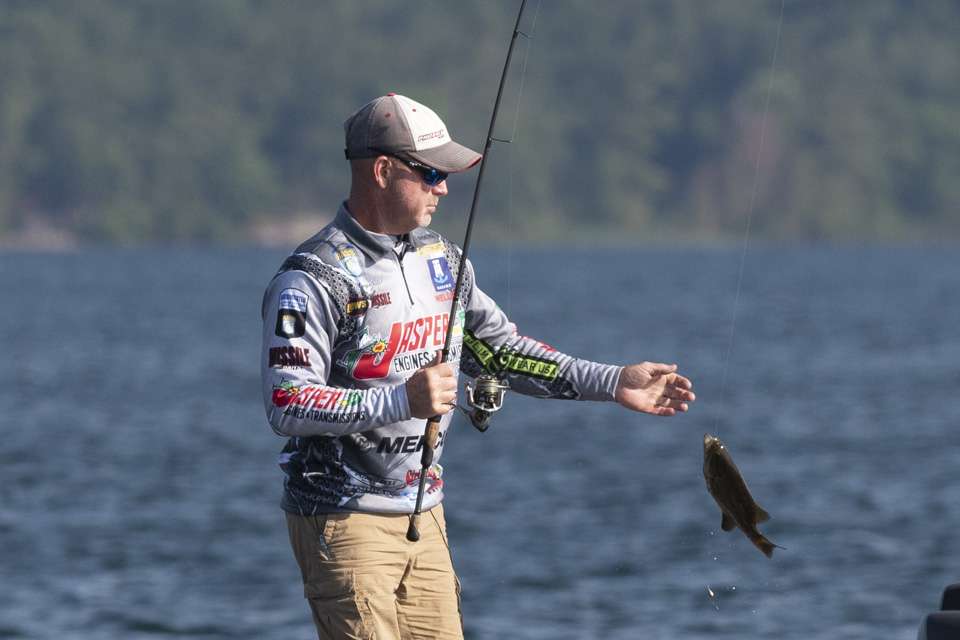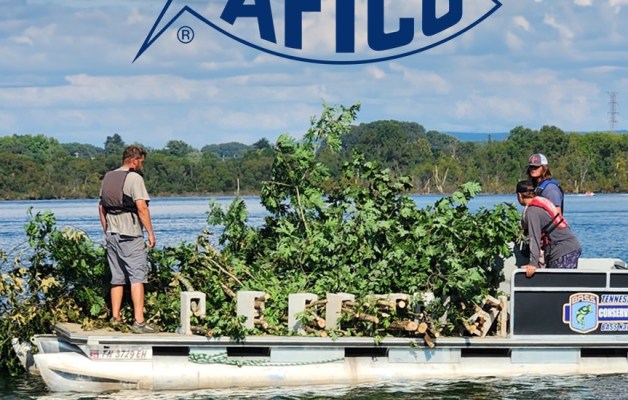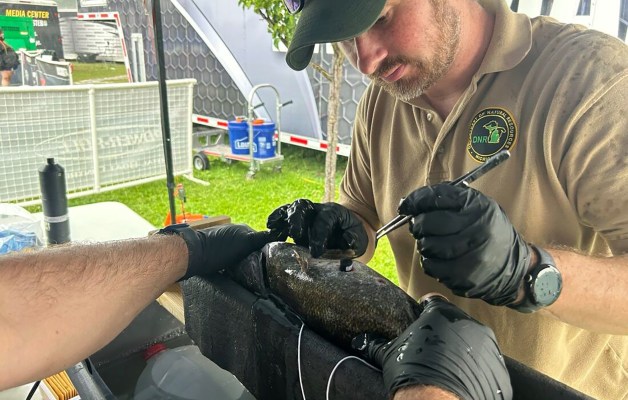
I completed the northern swing with two really good finishes and one that was fairly good. In addition to rising up the Bassmaster Angler of the Year standings, I also got a reminder about how vigilant we need to be with respect to fish care.
As I wrote in this column in late July, B.A.S.S. is the very best at keeping fish alive, and over the course of my career I’ve been fortunate not to lose many fish. Nevertheless, this year in New York I had a situation arise that reminded me once again how fragile bass can be.
Just because the water up north is cooler doesn’t mean that the fish are bulletproof. While we were in New York this year they were experiencing their warmest water temperatures in a very long time. Combined with rough water conditions, long days and long runs, that created situations where we had to take extreme measures.
On the St. Lawrence I ended up losing one fish each of the first two days. I was paying attention to how they were acting and taking my usual steps — continuous inflow of fresh water and constant use of both my recirculating pumps and my Oxygenators — but the fish still couldn’t survive.
I hadn’t been catching them very deep, so they didn’t need to be fizzed, but still they were floating on their sides and could not be revived. It made me pretty upset, so after weigh-in I consulted with B.A.S.S. Conservation Director Gene Gilliland to try to find a solution. His suggestion was to cool the water down. He said recent research has proven that cooling livewell water slightly below lake or river water temps can significantly improve survival of fish released after tournament weigh-ins.
Keeping Gene’s suggestion in mind I worked even harder to keep them alive under the same conditions on Day 3. I filled and plugged my livewells, adding fresh water only when some sloshed out, and then put my recirculators and Oxygenators on continuous. Additionally, I added both G-Juice and ice, enough of the latter to cool the livewell temps about 5 to 7 degrees. Then I added more ice intermittently to keep the temperature consistent.
I’ve heard stories that store-bought ice has too much chlorine to mix in with your fish, but Gene confirmed that there’s nothing to worry about there – the small amounts present will not negatively impact your fish. As an alternative, you can freeze water in half-gallon milk jugs or plastic soft-drink bottles and place them in your livewell to cool the water.
Another step I took was more careful use of my cull balls. Of course I used punctureless clips, as required, but I used them sparingly. When I caught a fish that I was unlikely to cull, I just threw the ball in the livewell, untethered, so I could keep track of how many fish I had. I only actually attached them to smaller fish. All of my fish stayed upright all day and with the cooler internal temperatures they settled comfortably on the bottom of the livewell. I never came close to losing another fish during the northern swing.
Getting those livewell temperatures right is a little bit of an art and a little bit of a science. You have to be careful not to cool the water down too quickly or too much or you’ll shock the fish. They may look fine in your livewell, but keeping the water too cool can be a serious problem when the fish are released after weigh-in, back into warmer lake or river water.
My strategy was to bring three 10-pound bags of ice placed in an insulated bag in the rear compartments. I’d add about a half bag per livewell to cool them down, and then I’d check them every hour or so, or after running in rough water. If you really wanted to be precise about it, you could place a floating thermometer in the livewell.
One other key, if it’s possible given the type of tournament you’re fishing, is to use both livewells to spread the bass out. This reduces stress on the fish and slows the consumption of oxygen in the livewell water.
By the time I got in each day after making those changes, my fish were all super-healthy. In fact, it was sometimes difficult to catch them when transferring them to weigh in.
Even though I didn’t lose any more fish after those first two days, and those losses didn’t cost me any money, I was still really bothered by the whole ordeal. Those northern fish are a precious resource, possibly 10 or 15 years old, and I would have loved for someone else to have the opportunity to catch them. Paying attention to the little details is critical, and it pays off in the long run, most notably in keeping our most precious resource vibrant and healthy.





